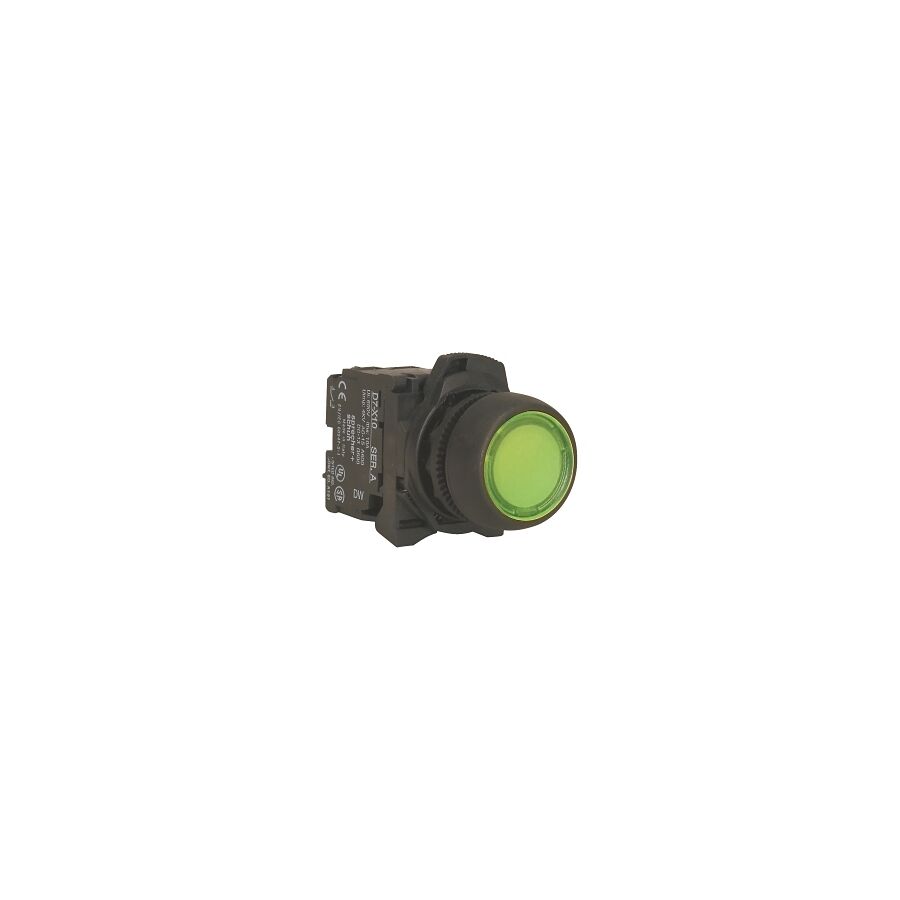Kingsgrove Branch:
Push Button Switch

G'day, DIY legends! So, you've got a project on the go—maybe for the shed, the 4x4, or a custom control panel—and you've hit a snag with a push button switch. It looks simple enough, but those little terminals on the back can be a bit of a puzzle.
No worries, mate. Wiring a push button switch is a straightforward job once you know the basics. Whether it's a momentary switch for a horn or a latching one for some custom lighting, this guide will get you sorted. Let's get stuck into it!
Safety First, Always!
Before you even think about touching a wire, let's get the serious bit out of the way. When dealing with electricity, you can't be too careful.
- Disconnect the Power: Always make sure the power source (whether it’s a 12V battery or the mains) is completely disconnected. Double-check it.
- Use the Right Tools: Use insulated tools and proper wire strippers.
- When in Doubt, Call a Sparky: If you're working with 240V mains power or you're not 100% confident, get a licenced Australian electrician on the job. It’s not worth the risk.
Understanding Your Push Button Switch: The Basics
Most push button switches you'll come across have at least three terminals. Understanding what these do is the key to getting it right.
- C (Common): This is your main connection point. Think of it as the input. Your power source will usually connect here.
- NO (Normally Open): In its resting state, this contact is open, and no electricity flows through it. When you press the button, the connection is made, and the circuit becomes complete. This is perfect for things like doorbells, horns, or computer start buttons.
- NC (Normally Closed): This is the opposite of NO. The connection is closed by default, allowing electricity to flow. When you press the button, the circuit is broken. This is often used for emergency stop buttons or safety cut-offs.
You'll also need to know if your switch is Momentary (only active while you're pressing it) or Latching (press once for 'on', press again for 'off').
Step-by-Step: How to Wire a Push Button Switch (The Fair Dinkum Guide)
We'll focus on the most common setup: using the Normally Open (NO) circuit to turn something on, like an LED light or a small motor.
What You'll Need:
- Your push button switch
- The device you want to power (e.g., an LED light)
- Your power source (e.g., a 12V battery)
- Electrical wire
- Wire strippers/cutters
The Steps:
- Kill the Power: Make sure your battery or power supply is completely disconnected. She'll be right, just double-check.
- Identify the Terminals: Look at the bottom of your switch. The terminals should be labelled C, NO, and NC. If they aren't, you may need to check the manufacturer's diagram.
- Connect Power to the Switch: Run a wire from the positive (+) terminal of your power source to the C (Common) terminal on your push button switch.
- Connect the Switch to Your Device: Run a second wire from the NO (Normally Open) terminal on the switch to the positive (+) input on your device (e.g., the positive leg of your LED light).
- Complete the Circuit: Finally, run a third wire from the negative (-) side of your device back to the negative (-) terminal of your power source. This completes the circuit.
- Test Your Work: Reconnect the power source safely. Press the button. If you've wired it correctly, your device should power on! If it's a momentary switch, it will turn off when you release it. If it's a latching switch, it will stay on until you press it again.
Quick Wiring Diagram (A Simple Mud Map)
Here’s a simple way to visualise the Normally Open circuit:
[+] Power Source --> [C] Terminal on Switch
[NO] Terminal on Switch --> [+] Device (e.g., Light)
[-] Device --> [-] Power Source
And that's pretty much it! Wiring an NC circuit is just as easy—you'd simply use the NC terminal instead of the NO terminal.
Need a Top-Notch Switch for Your Project?
Now that you know the ropes, you’ll need a reliable switch that can handle the job. For quality and durability, you can't go past a good Aussie supplier. Schnap Electric Products specialise in high-quality electrical components perfect for any application.
Whether you need a rugged switch for your workshop or a sleek, illuminated one for a custom dash, they've got you covered. Check out some of their popular options:
- The Schnap SE-PBM19 Metal Momentary Switch: A tough, IP67-rated metal push button perfect for harsh environments. Ideal for industrial machinery, 4x4 accessories, and outdoor gates.
- The Schnap SE-PBL16 Illuminated Latching Switch: A brilliant choice for control panels. This latching switch has a built-in LED ring (available in multiple colours) so you always know when your circuit is active.
- The Schnap SE-E-Stop NC Switch: For applications where safety is paramount, this Normally Closed emergency stop button provides a reliable and immediate cut-off.
Don't muck about with dodgy parts. Give your project the quality it deserves. Explore the full range of push button switches at Schnap Electric Products today!
Recent posts

Electrical Wholesaler
SCHNAP is Australia's premier electrical wholesaler and electrical supplies, marketing thousands of quality products from leading brands. Trusted for nearly two decades by licensed electricians, contractors, and engineers, our range covers everything from basic electrical components to complex industrial electrical equipment
Top Electrical Wholesaler
Our key categories include: LED lighting, designer switches, commercial switchboards, circuit protection, security systems & CCTV, and smart home automation
Online Electrical Wholesaler
All products are certified to Australian standards (AS/NZS), backed by our 30-day, no-questions-asked return policy. Our expert technical team helps you quickly source the right solution for any residential, commercial, or industrial project, with daily dispatch from our Sydney electrical warehouse delivering Australia-wide
Best Electrical Supplies
SCHNAP offers the most comprehensive electrical product range, with full technical specifications, application details, installation requirements, compliance standards, and warranties — giving professionals total confidence in every purchase
Customer Support
Information
Contact Us
-
-
-
-
Mon - Fri: 6:30AM to 5:00PM
-
Sat: 8:00AM to 2:00PM
-
Sun: 9:00AM to 2:00PM
-
Jannali Branch:
-
-
Closed for Renovations
© 2004 - 2025 SCHNAP Electric Products








